Discover the Best Board Games for Every Player
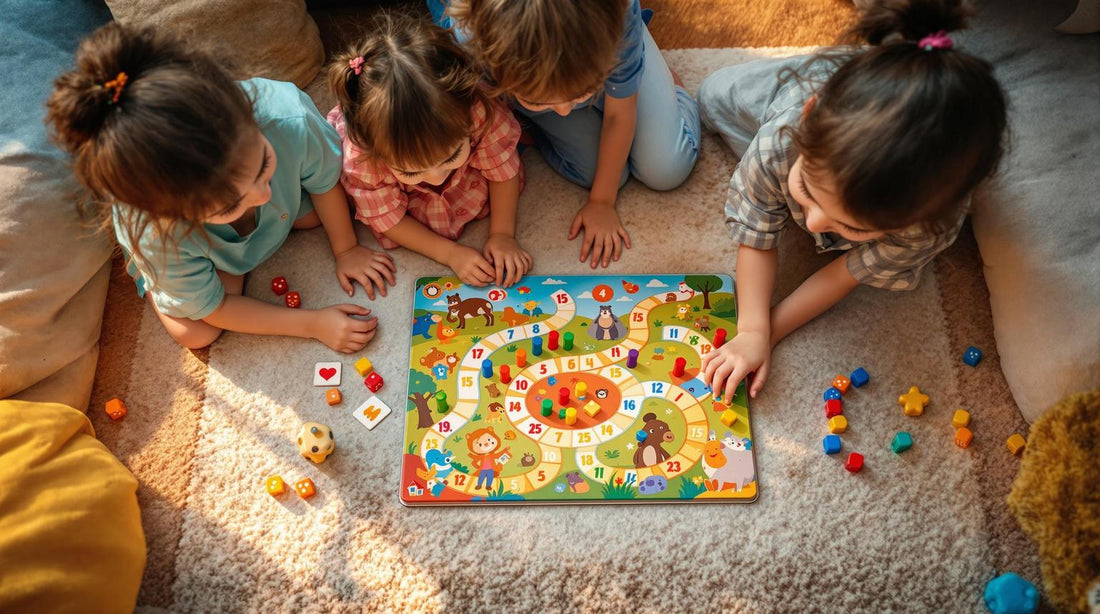
10 Best Board Games for Ages 3-6
Board games are a fun way for kids aged 3–6 to learn key skills like counting, color matching, teamwork, and motor coordination. Here's a quick guide to the top 10 games for this age group:
- Candy Land: Teaches color recognition and sequential thinking.
- Chutes and Ladders: Builds counting skills with a numbered grid.
- The Sneaky Snacky Squirrel Game: Improves fine motor skills and color matching.
- Hoot Owl Hoot!: A cooperative game that encourages teamwork and strategic thinking.
- First Orchard: Focuses on group play, color recognition, and counting.
- Sequence for Kids: Develops pattern recognition in a playful way.
- Zingo!: Enhances word and picture recognition for early learning.
- Richard Scarry's Busytown: Promotes teamwork and object-finding skills.
- Hi Ho! Cherry-O: Introduces basic math through counting and simple addition/subtraction.
- Animal Upon Animal: Strengthens hand-eye coordination with stacking challenges.
These games help kids develop social, cognitive, and motor skills while keeping them entertained. Whether it's teamwork, counting, or problem-solving, there's something here for every young learner.
How To Play Candy Land - Best Board Game For Preschoolers & Young Children
1. Candy Land
Candy Land is a timeless board game designed for kids aged 3 to 6, making it a perfect way to introduce young children to the world of board games. The gameplay is simple: players draw cards with colors and move their pieces to the corresponding spaces. This helps kids practice basic color recognition and develop sequential thinking. By focusing on color matching and following a path, Candy Land creates an easy and engaging experience for preschoolers.
2. Chutes and Ladders

Chutes and Ladders is a classic board game that helps kids practice counting while having fun. The game uses a numbered grid - usually from 1 to 100 - where players spin a wheel and move their pieces along the path.
As kids move their pieces, they count aloud, reinforcing their number skills. For example, if a player is on space 15 and spins a 4, they'll count 16, 17, 18, 19 as they move forward.
The ladders and chutes add a twist: ladders let players climb ahead, while chutes send them backward. This introduces kids to the ups and downs of competition in a lighthearted way. Plus, the turn-taking mechanics make it a great way to practice patience and fair play.
Since the game relies on chance, it provides an easygoing way for children to learn about winning, losing, and taking turns - all while sharpening their counting and number recognition.
3. The Sneaky Snacky Squirrel Game
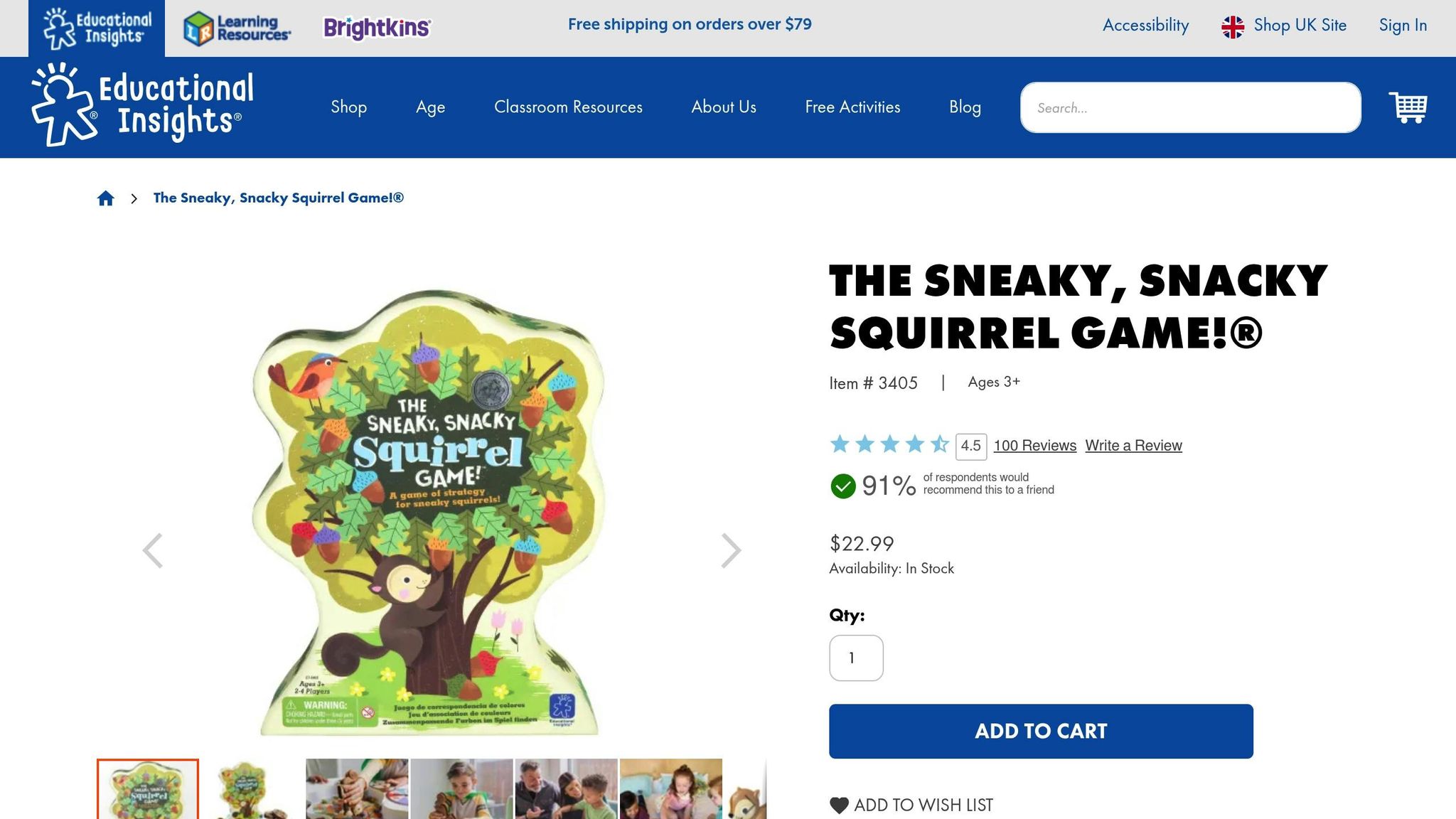
The Sneaky Snacky Squirrel Game is a lively color-matching board game perfect for preschoolers aged 3–6. Using a special squirrel-shaped tool, kids match colors while improving their fine motor skills. The gameplay also helps reinforce color recognition in an exciting and interactive way. Ready for another classic? Up next: a game that focuses on counting and turn-taking.
4. Hoot Owl Hoot!
Hoot Owl Hoot! is a cooperative board game designed for kids aged 3 to 6. The goal? Players team up to help the owls fly back to their nest before the sun comes up. Along the way, kids practice teamwork and learn to make basic strategic choices - all in a fun, noncompetitive setting. Ready to discover another game that builds on these skills? Let’s dive in!
5. First Orchard

First Orchard is a great game for preschoolers, encouraging teamwork while teaching basic skills like color recognition and counting. The goal is simple: players work together to gather fruit before the raven reaches the orchard. This cooperative gameplay makes it an excellent choice for introducing young children to group play and early learning concepts.
sbb-itb-1ed942f
6. Sequence for Kids
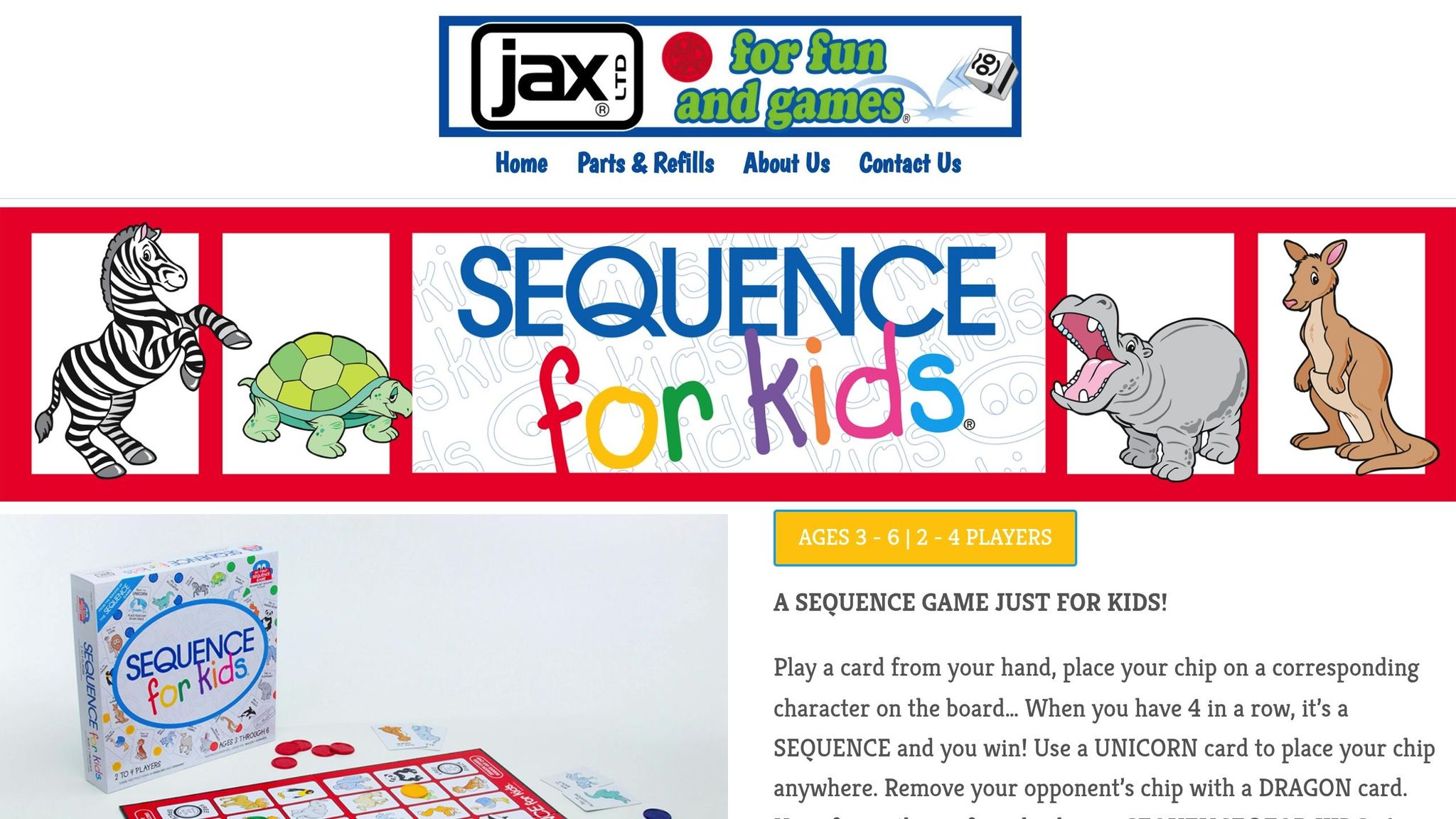
Sequence for Kids takes the well-loved concept of pattern recognition and makes it fun and accessible for preschoolers. Players match animal cards to spaces on the board, helping them build pattern recognition skills in an engaging and playful way.
7. Zingo!
Zingo! is a fun picture-matching game designed to help kids aged 3–6 improve word recognition and sharpen their thinking skills. Players match images to words, making it an engaging way to support early learning and development. Looking for more games like this? There are plenty of options to keep young minds growing!
8. Richard Scarry's Busytown
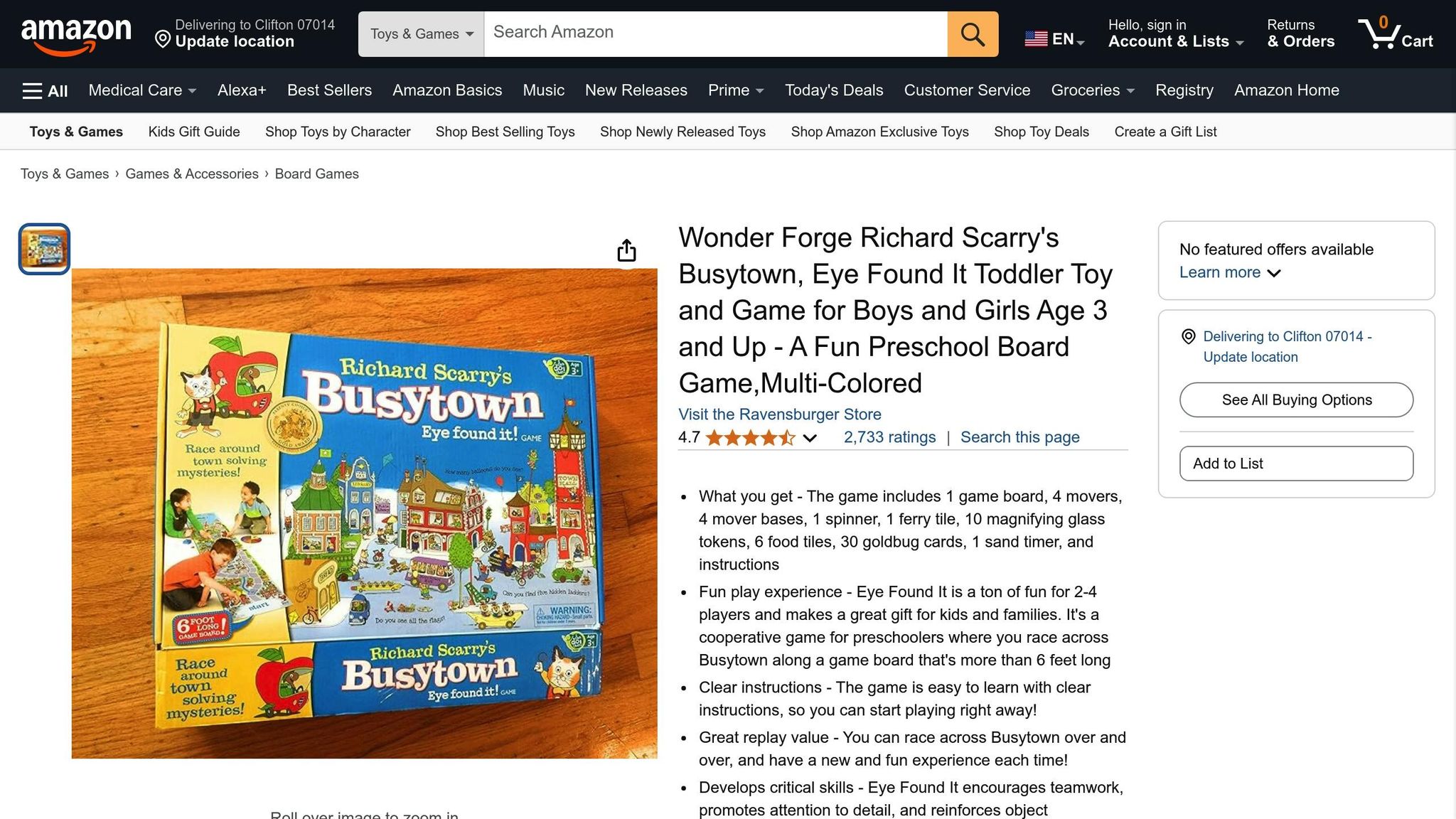
Richard Scarry's Busytown is a search-and-find game designed to encourage teamwork and communication. This cooperative gameplay style keeps kids engaged while helping them build important social skills.
The game’s vibrant board is inspired by the whimsical world of Busytown. Players team up to move a bus token across the board, stopping at different locations to search for hidden objects. The goal? Spot the objects quickly to complete fun challenges together.
9. Hi Ho! Cherry-O
Hi Ho! Cherry-O is a great first board game for young kids, helping them develop basic math skills in a fun way. The game involves players picking cherries from their tree and placing them in their basket. Each player starts with 10 cherries, and the goal is to be the first to move all of them into the basket. A spinner decides how many cherries to pick - or sometimes put back - making every turn exciting and interactive.
This game works well for kids aged 3–6 because it combines visual and hands-on learning. Kids physically handle the cherries as they count them, which helps with number recognition and one-to-one correspondence. The spinner adds another layer of learning by encouraging players to count forward and backward, recognize numbers, and practice simple math.
The straightforward rules make it easy for three-year-olds to join in, while six-year-olds can still enjoy the challenge of more advanced counting.
10. Animal Upon Animal
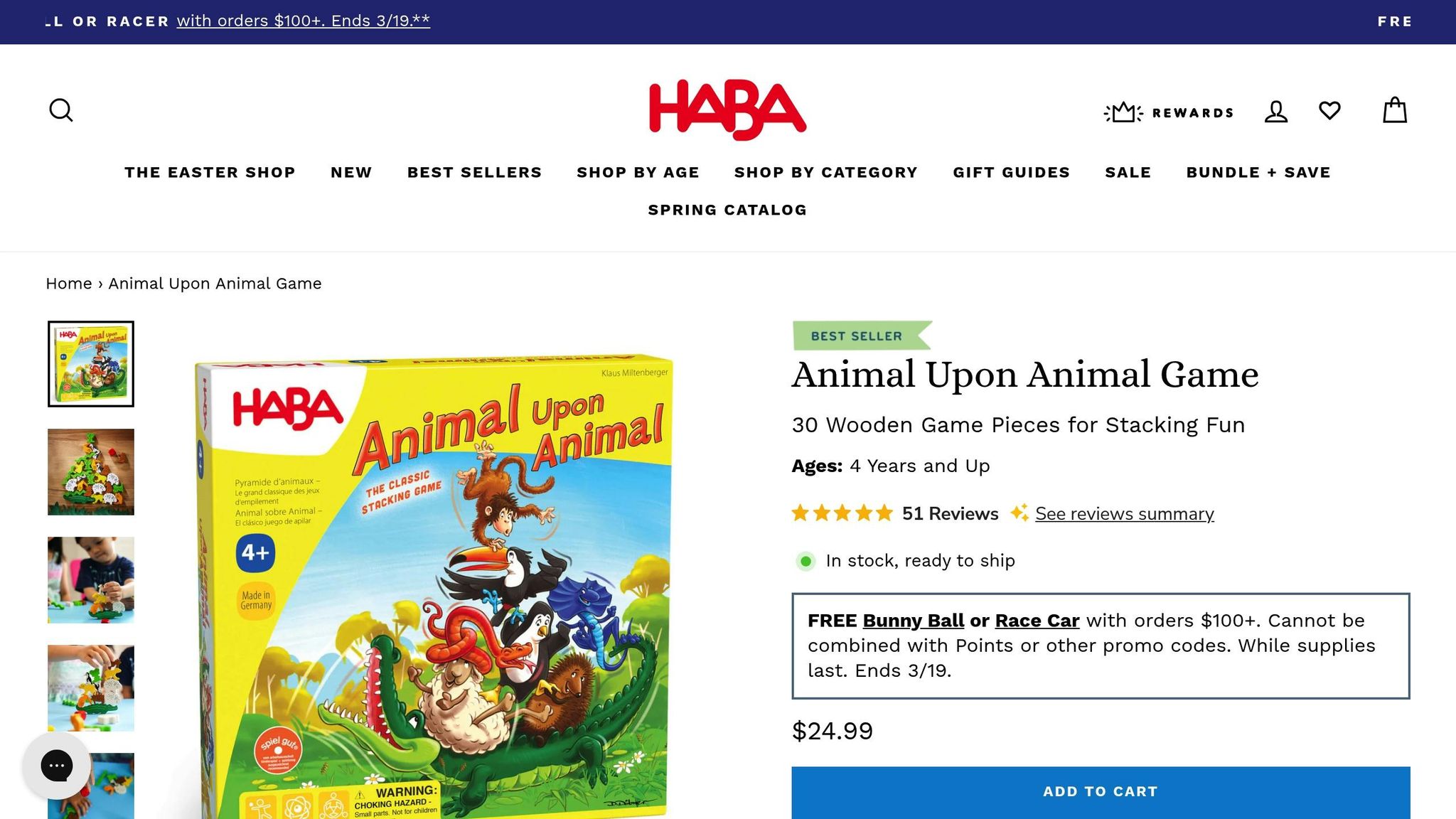
Closing out our list is a fun stacking game designed to improve motor skills and focus. Animal Upon Animal challenges young children to stack wooden animal pieces, helping them develop hand-eye coordination. It's perfect for kids aged 3–6.
You can make the game more engaging by introducing some creative twists:
- Color Challenge: Only stack animals of the same color.
- Time Trial: Add a timer, giving players 30 seconds per turn to stack as many animals as possible.
- Team Play: Let kids work together to build the tallest tower they can.
This game turns playtime into a learning experience, teaching kids coordination and precision in a fun and interactive way.
Conclusion
Board games are a fantastic way for kids to build skills while having fun. They encourage growth in both thinking and social abilities, all through an enjoyable and interactive experience.
Playing these games helps kids naturally improve problem-solving and social skills. For instance, stacking and pattern-matching games can sharpen coordination and memory, while cooperative games teach lessons like taking turns, following rules, and handling emotions.
Here are a few tips to make the most out of playtime:
- Keep sessions short (15–20 minutes) to maintain focus.
- Focus on fun rather than winning.
- Show how to play by demonstrating the rules.
- Adjust rules to suit your child’s needs.
Remember, every child learns at their own pace. Mistakes are part of the process, and even small wins are worth celebrating.
Switching between different types of games - like those based on luck and those requiring strategy - keeps things exciting and helps kids develop a variety of skills.
For more ideas, check out Brain-Games.com for titles published by Brain Games or visit Brain-Games.lv/en/ to explore a wide range of popular board games.






